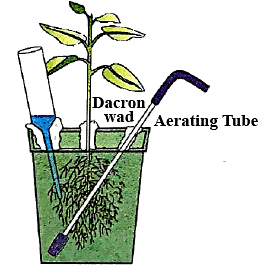Grade 11 Exam > Grade 11 Tests > Biology for Grade 11 > Test: Methods to Study the Mineral Requirements of Plants (Old NCERT) - Grade 11 MCQ
Test: Methods to Study the Mineral Requirements of Plants (Old NCERT) - Grade 11 MCQ
Test Description
5 Questions MCQ Test Biology for Grade 11 - Test: Methods to Study the Mineral Requirements of Plants (Old NCERT)
Test: Methods to Study the Mineral Requirements of Plants (Old NCERT) for Grade 11 2024 is part of Biology for Grade 11 preparation. The Test: Methods to Study the Mineral Requirements of Plants (Old NCERT) questions and answers have been
prepared according to the Grade 11 exam syllabus.The Test: Methods to Study the Mineral Requirements of Plants (Old NCERT) MCQs are made for Grade 11 2024 Exam. Find important
definitions, questions, notes, meanings, examples, exercises, MCQs and online tests for Test: Methods to Study the Mineral Requirements of Plants (Old NCERT) below.
Solutions of Test: Methods to Study the Mineral Requirements of Plants (Old NCERT) questions in English are available as part of our Biology for Grade 11 for Grade 11 & Test: Methods to Study the Mineral Requirements of Plants (Old NCERT) solutions in
Hindi for Biology for Grade 11 course. Download more important topics, notes, lectures and mock
test series for Grade 11 Exam by signing up for free. Attempt Test: Methods to Study the Mineral Requirements of Plants (Old NCERT) | 5 questions in 5 minutes | Mock test for Grade 11 preparation | Free important questions MCQ to study Biology for Grade 11 for Grade 11 Exam | Download free PDF with solutions
Test: Methods to Study the Mineral Requirements of Plants (Old NCERT) - Question 1
The technique of growing plants in a nutrient solution, in complete absence of soil is called as
Detailed Solution for Test: Methods to Study the Mineral Requirements of Plants (Old NCERT) - Question 1
Test: Methods to Study the Mineral Requirements of Plants (Old NCERT) - Question 2
The given experimental set-up is used


Detailed Solution for Test: Methods to Study the Mineral Requirements of Plants (Old NCERT) - Question 2
| 1 Crore+ students have signed up on EduRev. Have you? Download the App |
Test: Methods to Study the Mineral Requirements of Plants (Old NCERT) - Question 3
Hydroponics or soilless culture helps in knowing
Detailed Solution for Test: Methods to Study the Mineral Requirements of Plants (Old NCERT) - Question 3
Test: Methods to Study the Mineral Requirements of Plants (Old NCERT) - Question 4
The technique of hydroponics is being employed for the commercial production of vegetables like
Detailed Solution for Test: Methods to Study the Mineral Requirements of Plants (Old NCERT) - Question 4
Test: Methods to Study the Mineral Requirements of Plants (Old NCERT) - Question 5
The technique of hydroponics was first demonstrated by
Detailed Solution for Test: Methods to Study the Mineral Requirements of Plants (Old NCERT) - Question 5
|
219 videos|306 docs|270 tests
|
Information about Test: Methods to Study the Mineral Requirements of Plants (Old NCERT) Page
In this test you can find the Exam questions for Test: Methods to Study the Mineral Requirements of Plants (Old NCERT) solved & explained in the simplest way possible.
Besides giving Questions and answers for Test: Methods to Study the Mineral Requirements of Plants (Old NCERT), EduRev gives you an ample number of Online tests for practice
|
219 videos|306 docs|270 tests
|
Download as PDF

















